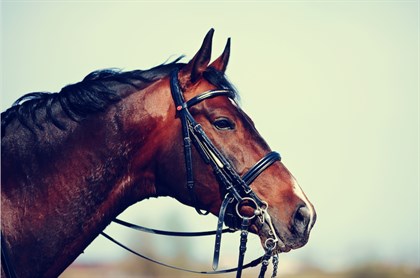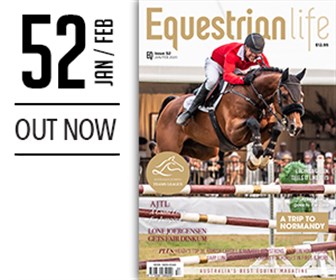
Would Your Horse’s Noseband Pass the Pressure Test?
Jayne Peters from Bishop Burton College, UK and her research team investigated three different noseband designs and their effect on rein tension and the force being exerted on the frontal nasal plane of horses whilst being ridden. These findings were presented at the 15th annual International Society for Equitation Science (ISES) conference, Aug 19, 2019, at the University of Guelph.
Of the three nosebands tested; the flash and drop nosebands showed significantly higher pressure on the front of the horse’s nose as compared to a cavesson type. The flash created the highest pressure.
Peters says, “According to initial findings; a common perception of restrictive noseband designs allowing a lighter rein aid may be inaccurate and warrant further investigation.”
According to the study, there was no significant change in rein tension when comparing the three nosebands.
Details of this eight-horse study:
- A Telerein tension gauge was used to calculate rein tension.
- A Pliance pressure system determined the amount of pressure caused by each noseband on the front of the horse’s nose.
- All horses were fitted using the ‘two-finger rule’, checked with an ISES taper gauge for accuracy.
- The horses were ridden by their owner, in a snaffle bridle, for all three nosebands.
This study raises equine welfare concerns when it comes to using nosebands with restrictive designs meant to prevent the horse from opening its mouth. With flash nosebands as the most prevalent design seen in international competition (46%) (Doherty et al., PloS One. 12:1, 2017), continuing investigation into potential damaging effects is needed.
ISES council member, Kate Fenner agrees with the welfare concern relaying findings from her own study, “Restrictive nosebands are a welfare concern as they can inhibit natural oral behaviour and cause stress.” (Fenner et al., PloS One. 11:5, 2016).
Internationally renowned researcher and co-founder of ISES, Paul McGreevy has also studied restrictive nosebands citing they can cause stress and possible tissue damage (McGreevy et al., 2012).
Peters closed her presentation at the ISES conference encouraging more focus on correct training than equipment. Currently, investigations reveal that the effect of tack is not yet fully understood. Scientific evidence may lead to industry perceptions being re-evaluated.
Source: International Society for Equitation Science media release
READ THE LATEST NEWS ARTICLES HERE
https://www.equestrianlife.com.au/articles/Would-Your-Horses-Noseband-Pass-the-Pressure-Test

